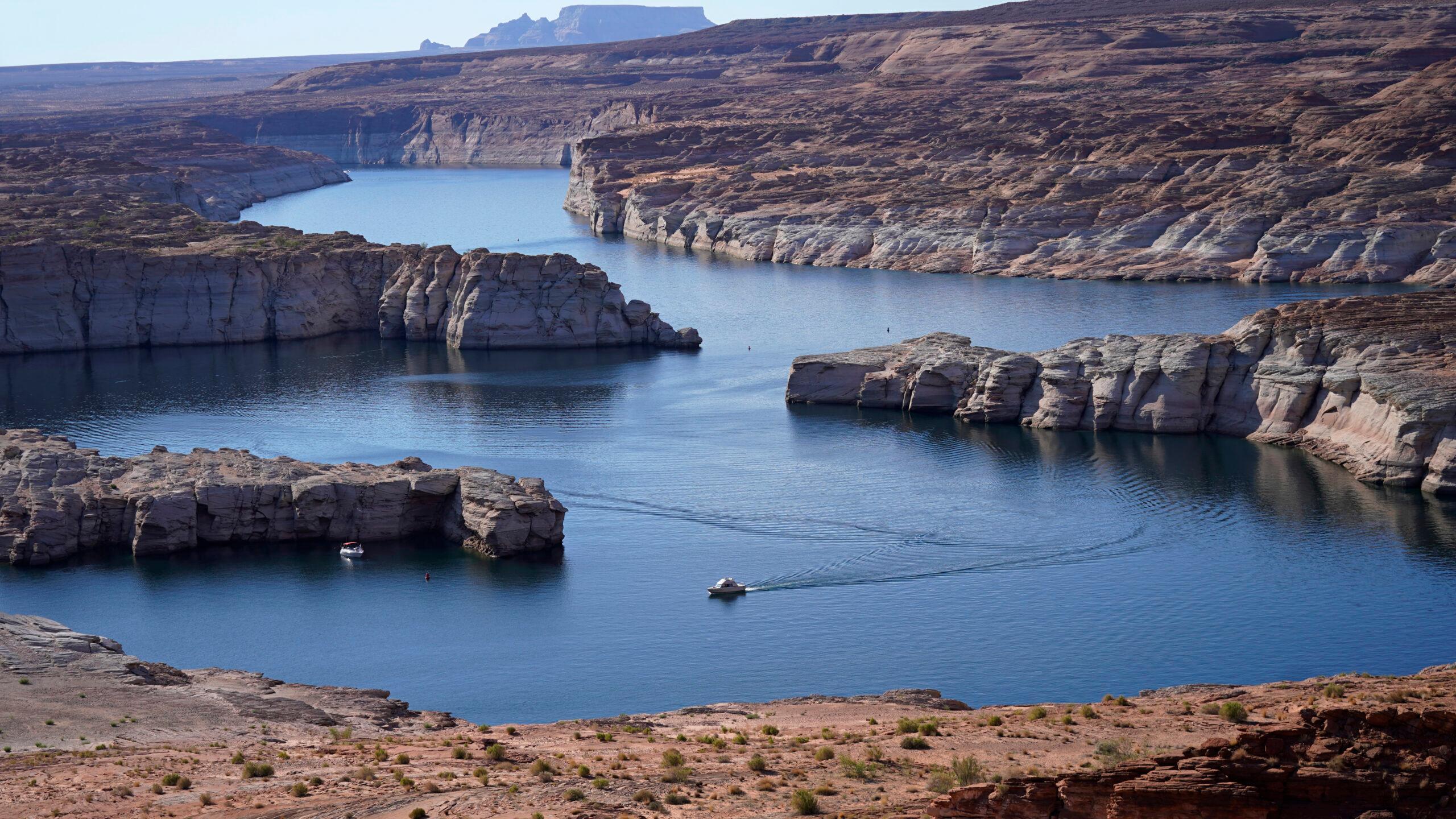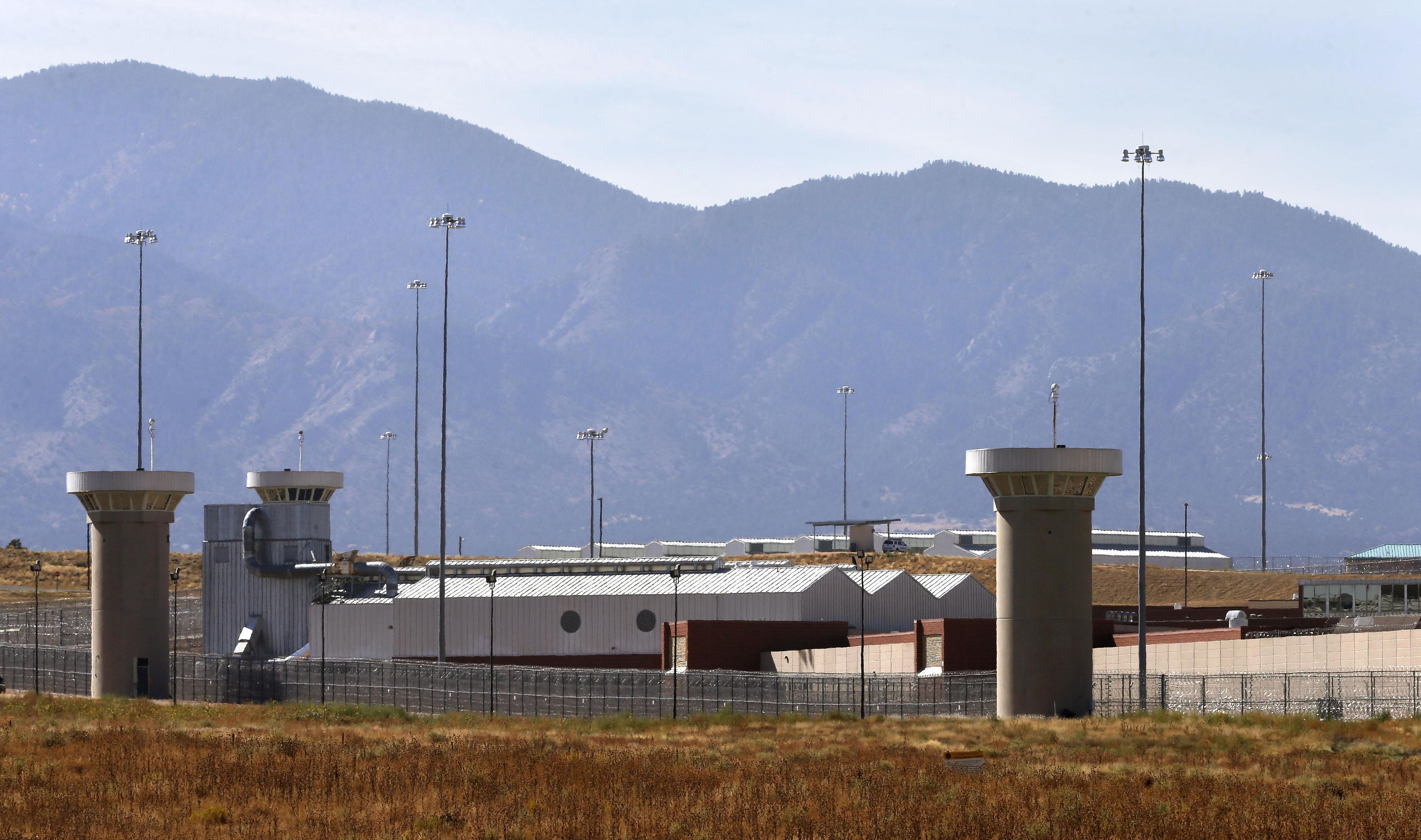
Lake Powell on the Utah-Arizona border has dropped below a critical threshold of 3,525 feet for the first time, shrinking the protective buffer of water the reservoir needs to produce hydroelectric power for millions of people in the West.
The reservoir is the second-largest in the U.S., and it’s a key piece of the Colorado River storage and supply system. Powell is fed mostly by snowmelt that collects in Colorado’s Rocky Mountains. A 20-year megadrought and a hotter climate, fueled primarily by greenhouse gas emissions from fossil fuels, has contributed to Powell’s levels dropping to all-time lows.
As Powell continues to dry up, there’s growing concern that there won’t be enough water in the reservoir to keep spinning the turbines that create electricity at Glen Canyon Dam.
Colorado and the other states that share the Colorado River agreed to work together to keep Powell above this critical threshold with the Congressionally approved 2019 Drought Contingency Plan. That agreement creates a 35-foot buffer of water before the reservoir hits "dead pool,” when reservoir levels are so low, the hydroelectric generators can no longer produce energy.
Water levels in Powell quickly started to drop after years of back-to-back drought. In response, the federal government in 2021 took emergency action and sent water from reservoirs in Colorado and other states to prop up supplies in Powell. Blue Mesa Reservoir outside of Gunnison lost eight feet of water as a result.
Ultimately, those releases did not prevent water levels from dropping below the critical threshold. But U.S. Bureau of Reclamation hydraulic engineer Heather Patno said the additional release did add about six feet of water to Powell, and any extra buffer helps protect Powell’s ability to produce energy.
Patno said the drop should be temporary as the snow in the mountains starts to melt and recharge the river and reservoirs. She said 2021 was the second-driest year on record for the Colorado River basin, and a very dry first few months of 2022 eroded the snowpack collecting in the mountains.
Each month the bureau releases updated projections forecasting water levels in Lake Powell over the next two years. Patno said Powell dropping below 3,525 was first seen as a possibility only in a worst-case scenario. Then, with warmer temperatures and less snow, the projections shifted to show the reservoir could fall below that level in early 2022. Today, that projection came true.
“We have been trying to avoid it, but at the same time we've been living in a drought for the last two decades,” Patno said.
Powell hit its lowest level on record in the summer of 2021 and has continued to drop. Patno said back-to-back dry years have hit the Colorado River before, but reservoirs like Lake Powell were full of water. Now 20 years into a drought, those reservoirs haven’t gotten the chance to catch up, and Patino said that means the system is now hitting critically-low levels. Powell is less than 25 percent full.
New research suggests there might be even less Colorado River water in the future than what’s forecasted.
A recent report from the Center for Colorado River Studies found that the U.S. Bureau of Reclamation’s projections can be too optimistic, partly because it’s based on the average water inflow into Powell from 1991-2020, a period that includes an abnormal decade in the 90s that was much wetter than the last 20 years.
Patno said those findings are important, and it and other studies should be considered when federal and state governments decide how to adapt their water operations to drought. She said Powell projections did improve when the bureau recently switched to using the last 30-year average, but that Powell forecasts rely on models that have a level of risk and uncertainty.
Powell’s worst-case projections show its level could drop below 3,525 feet again as early as August of this year. Patno said emergency water releases from Blue Mesa and other reservoirs might be needed again as one of the tools to keep Powell propped up, especially as the current snowpack continues to decline. Inflow forecasts into Powell expect about 69 percent of average. The ongoing drought also means dry soil will soak up a lot of that water before it reaches rivers and lakes, Patno said.
Colorado Water Conservation Board director Becky Mitchell said the potential of another emergency reservoir release illustrates why Colorado and the other states upstream of the Colorado River are currently working out a way to keep Lake Powell’s levels above 3,525 feet. The plan is an attempt to avoid the need for similar federal emergency action in the future.
“When we know that these dips or declines are coming, we’ll have the measures in place to take action in a unified way,” Mitchell said. A draft of that plan is expected in the spring.
States are also looking into the possibility of paying farmers, ranchers and other Colorado River users for their water to help shore up levels in Lake Powell. Mitchell said Colorado is still studying this possibility and noted that all four states upstream of the Colorado River agreed in 2019 to take a unified position on whether or not to move forward with the idea. Mitchell said the Upper Colorado River Commission is currently coordinating with upper-basin states on a potential water demand management plan. It could announce next steps in the fall.









